A trip to La Palma, Canary Islands, Spain
In our continuous quest to find new and exotic locations for our future photography residential workshops, we recently visited La Palma.
La Palma (San Miguel de La Palma) is a small volcanic ocean island that is part of the group of 7 islands which make up the Canary Islands, and belongs to Spain.
La Palma has an area of 706 km2 and is the fifth largest of the seven Canary Islands, its total population is 86,000 people.
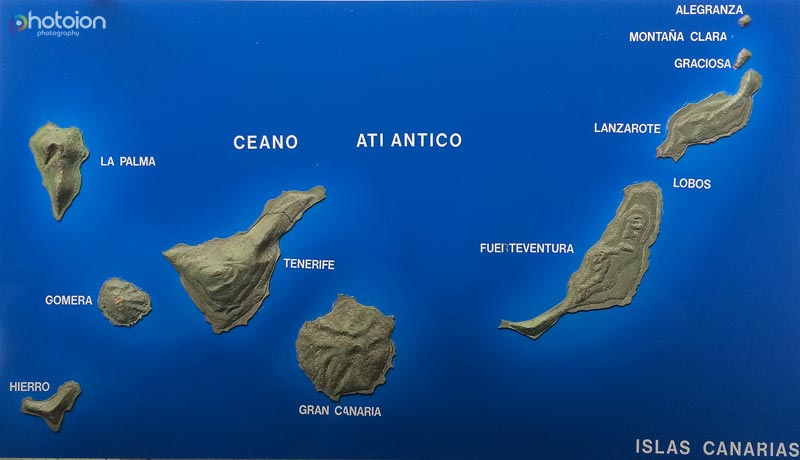
Canary Islands map, Spain (Islas Canarias).
Within minutes of landing at La Palma airport, we could tell that the island was a very friendly place. And judging by the 2 windmills planted just by the ocean, La Palma is clearly quite eco focused! Solar panels providing eco friendly energy can be seen across the island.
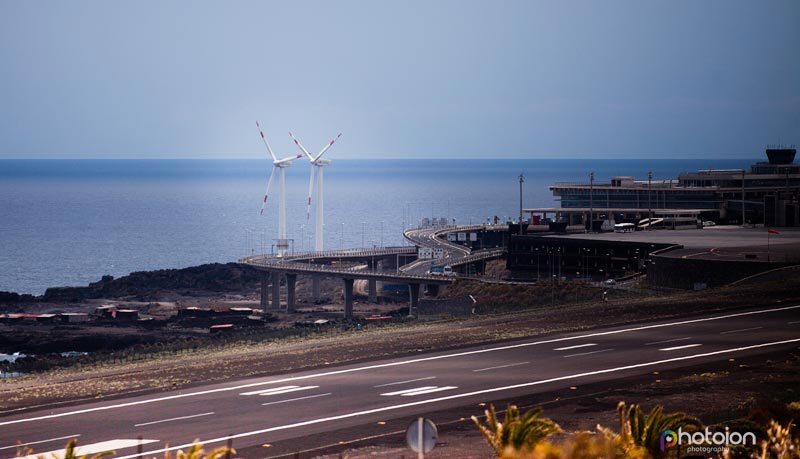
La Palma Santa Cruz Airport (Canary Islands, Spain).
About an hour after landing, we were sitting in front of a beautiful Swedish wooden style chalet called “Casa Lupe”, which was only a few hundred meters from the Atlantic Ocean.
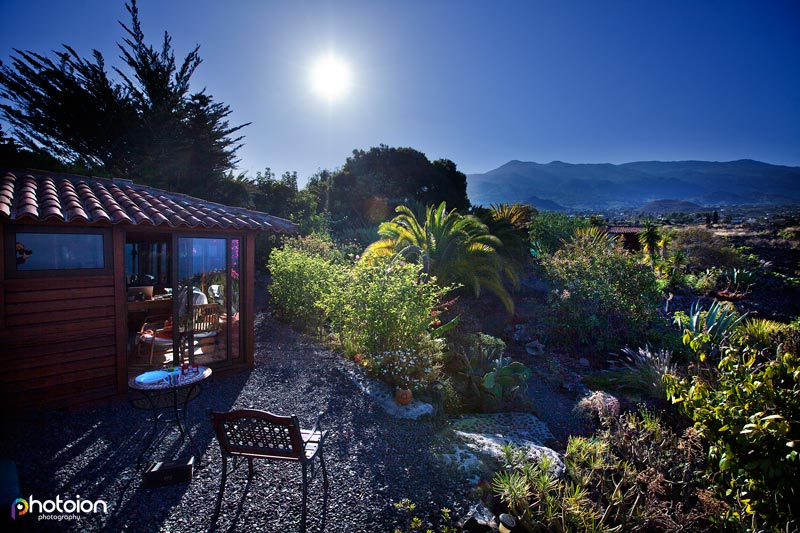
Casa Lupe Wooden Style Chalet, La Palma, Todoc, Canary Islands, Spain.
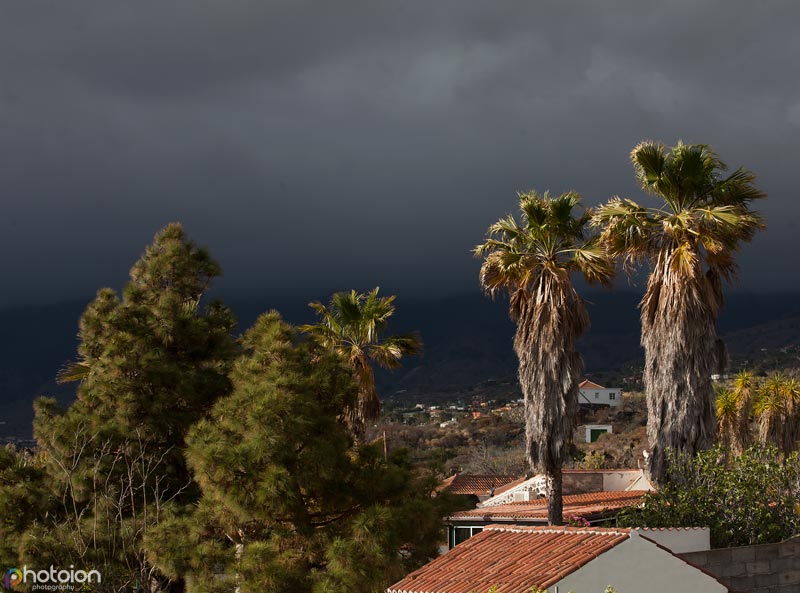
The surroundings of the Casa Lupe Chalet in La Palma, Todoc, Canary Islands, Spain.
The chalet was surrounded by a beautiful terraced Mediterranean garden. As we wandered through the garden, a pair of lizards gathered to watch us curiously; we felt like intruders initially, but soon we were part of the family feeding the beautiful reptiles. While I was enjoying a Spanish local (Dorada) beer, I couldn’t resist any longer, and grabbed my camera to snap a few shots of the lizards; which were enjoying the sun’s heat lying on the rocks. More images of the lizards to follow.
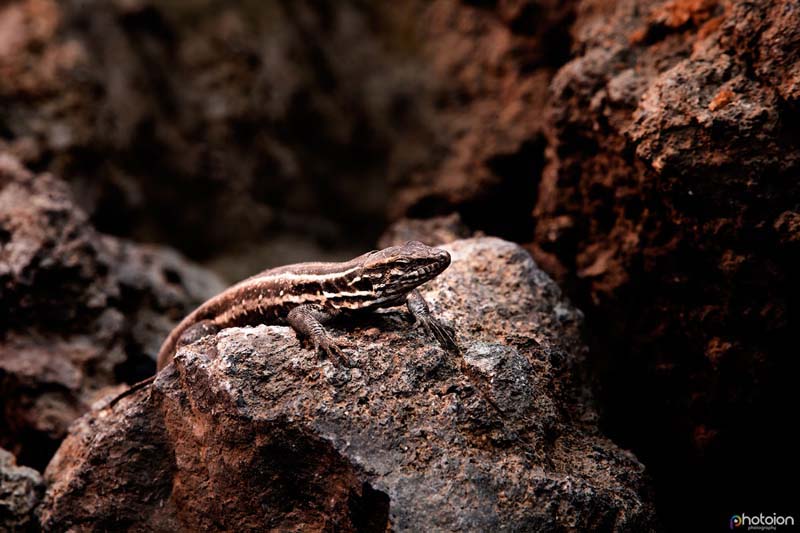
Lizard lying on the rocks – image by Ion.
Paradiso’s garden truly was breathtakingly beautiful, filled with colourful and exotic plants.
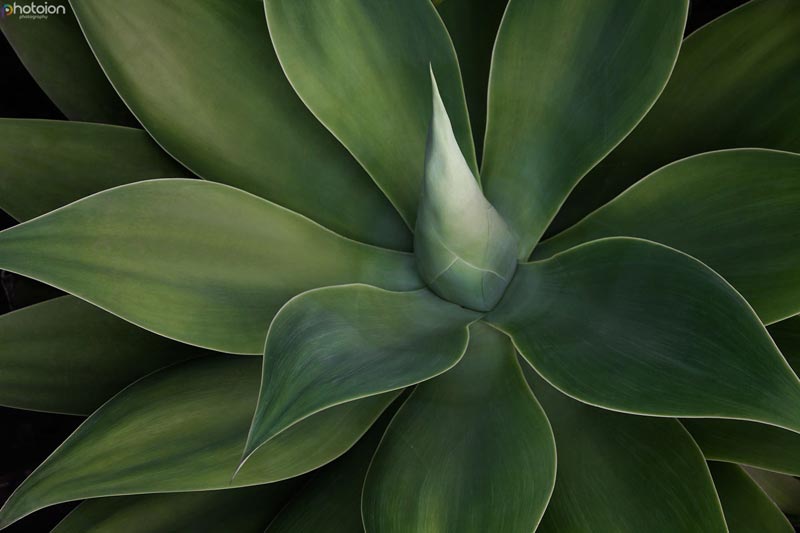
Image of Agave Attenuata Cactus Plant – image by Ion.
We made a note to get more images of them and learn more about them the next day. We were very pleased with the beautiful variety of flowers.
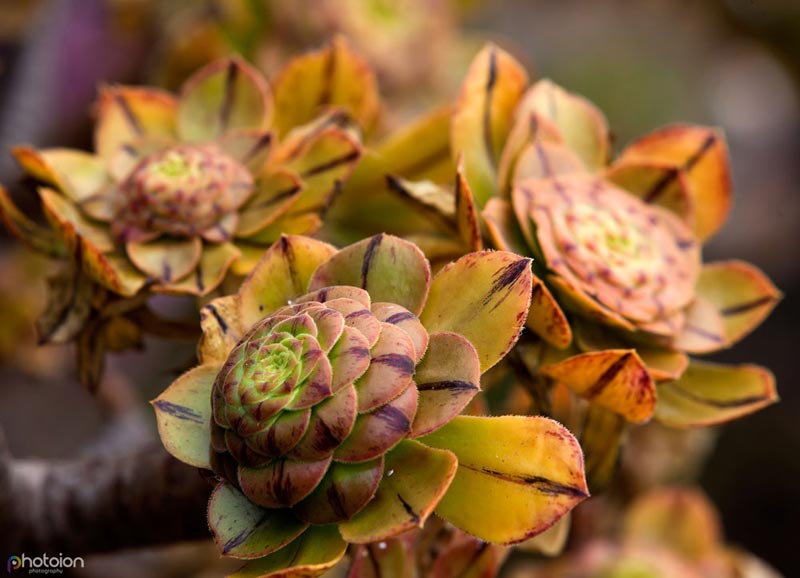
Aeonium canariense Verode Bejeque succulent cactus plant -image by Ion.
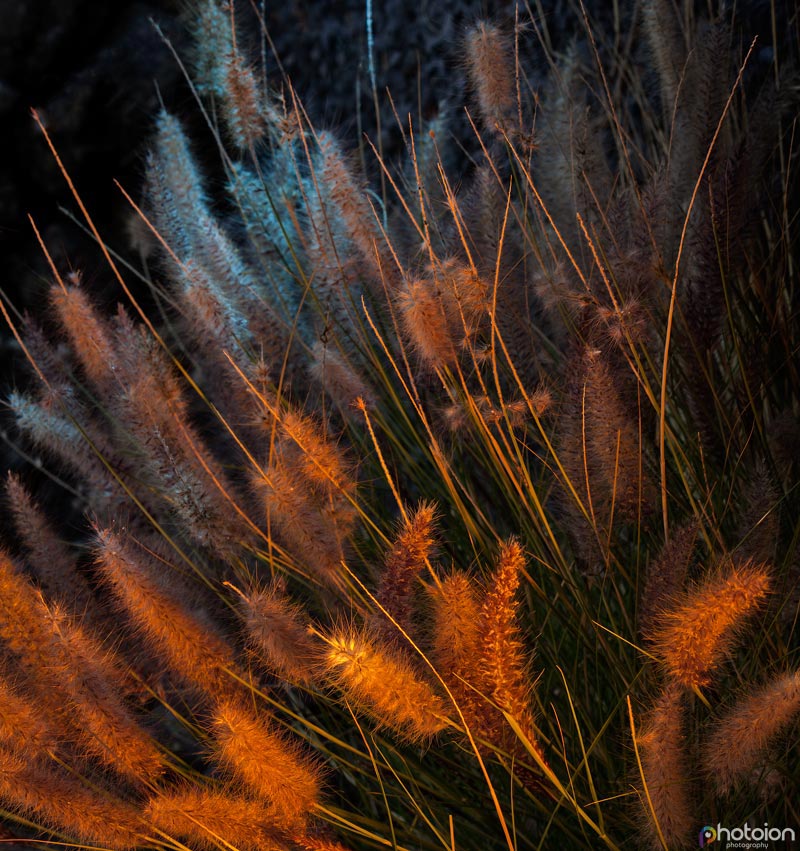
Image of unknown Plant (update 4th Jan 2017 – Kitten-tail Grass or Rabo de Gato) – image by Tatiana.
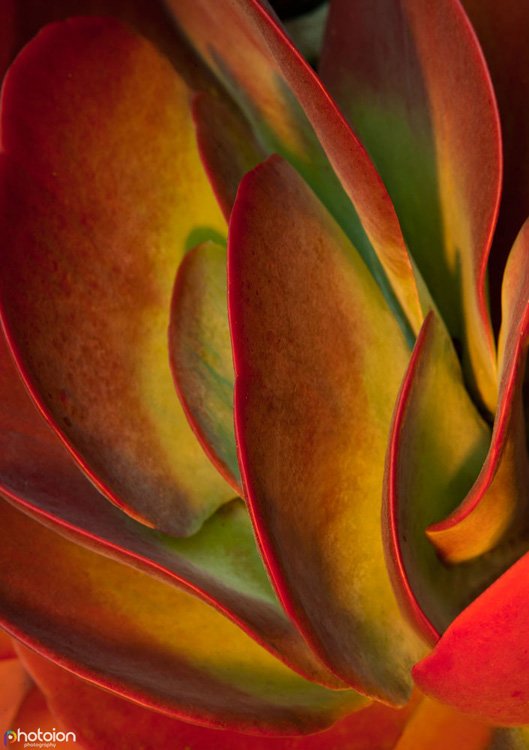
Close up of succulent Cactus – Cacti – image by Ion.
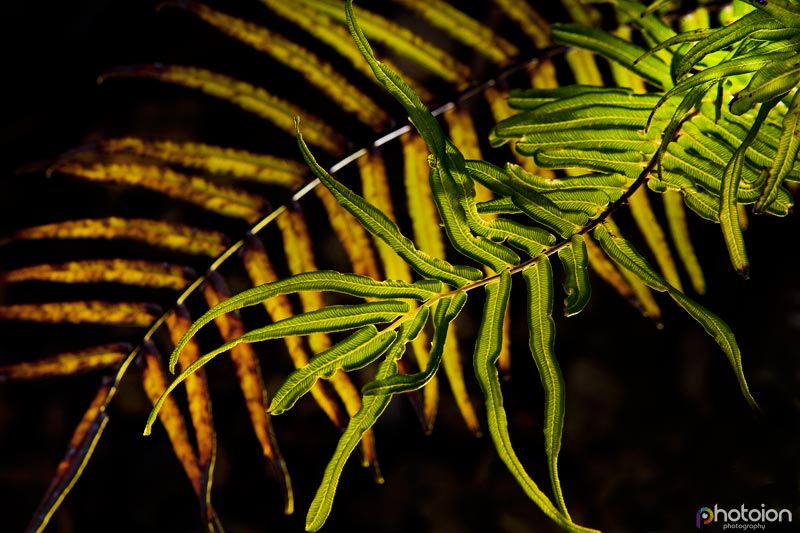
Cycad Plant – image by Tatiana.
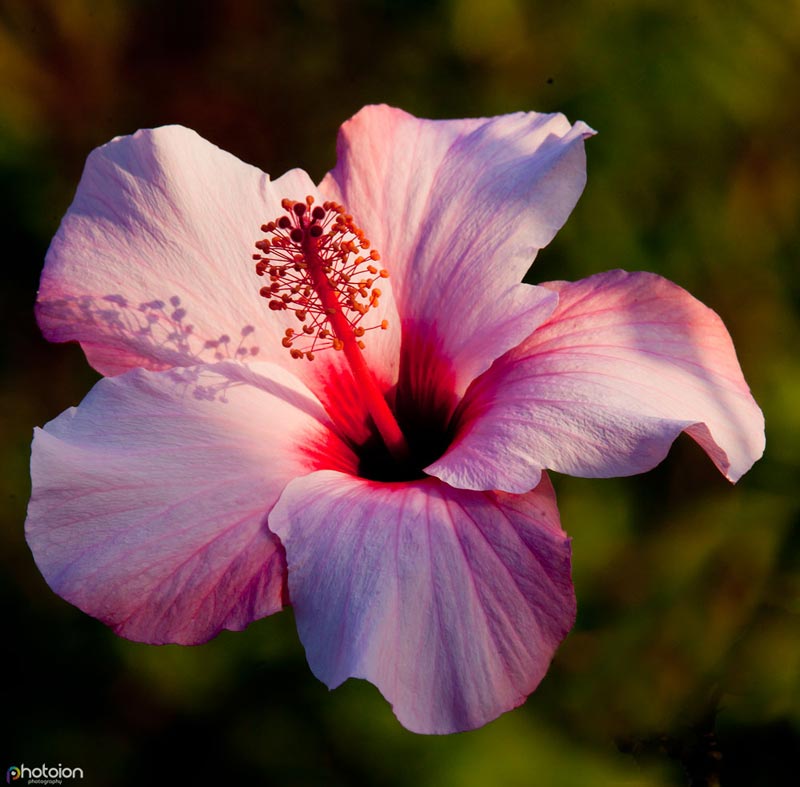
Pink Hibiscus plant – image by Ion.
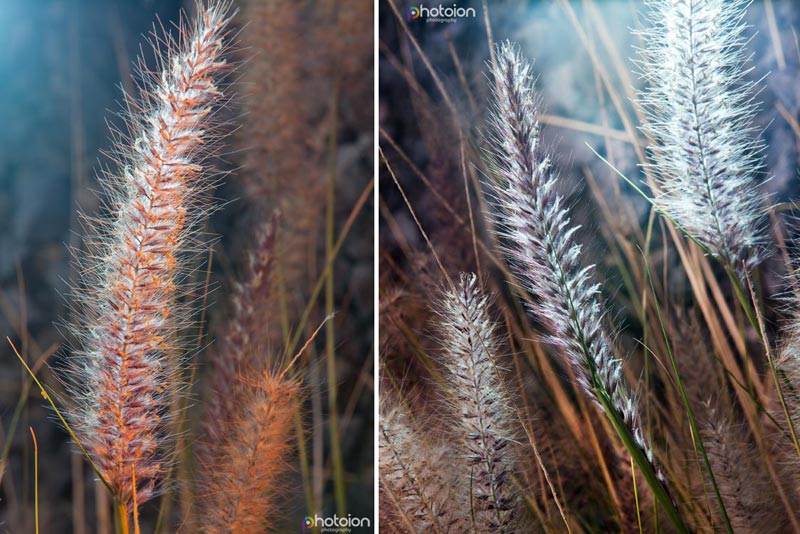
Kitten-tail Grass or Rabo de Gato in the garden of El Paradiso – image by Tatiana.
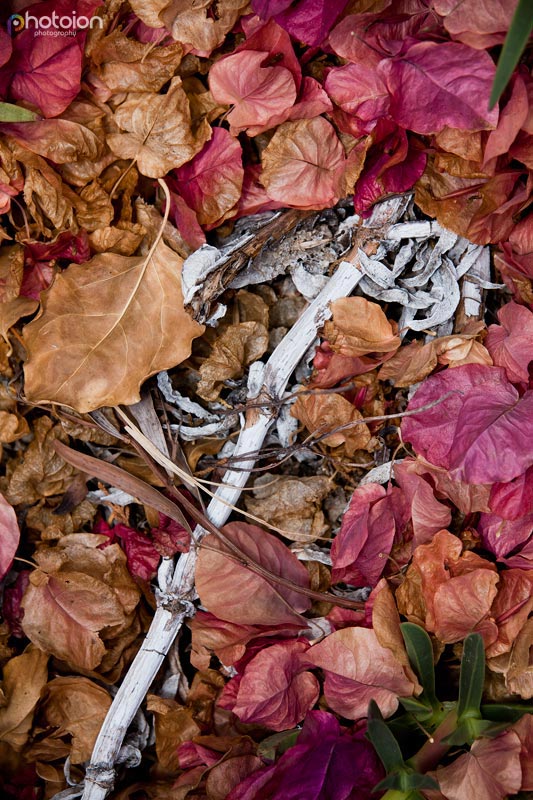
Dry colourful leaves – image by Tatiana.
We began exploring the island immediately, including food options. Restaurants in La Palma are really good and pretty cheap in comparison with any other west country in Europe.
The food was always freshly cooked, and very tasty. Our favourite local dish began as deep fried rabbit, but the seafood was also excellent, and the grilled squid became a strong contender to the rabbit. We also tried Paella in the capital Santa Cruz de la Palma.
The deserts were also not to be missed, and we had one of the best tiramisu’s w’ve ever had the pleasure of eating. It wasn’t too rich, or too heavy: it was just right. We were very pleased with the food and as far as the drinks were concerned we found them ridiculously cheap; there was a huge offering of local wine which we prized.
The local economy of La Palma is primarily based on agriculture and tourism. You can find plenty of crops of Platanos (Bananas) and Strelitzia (‘Bird of Paradise’) flowers, oranges, avocados, and grapes which grow well in the volcanic soil. Local farmers also herd cows, sheep, and goats.
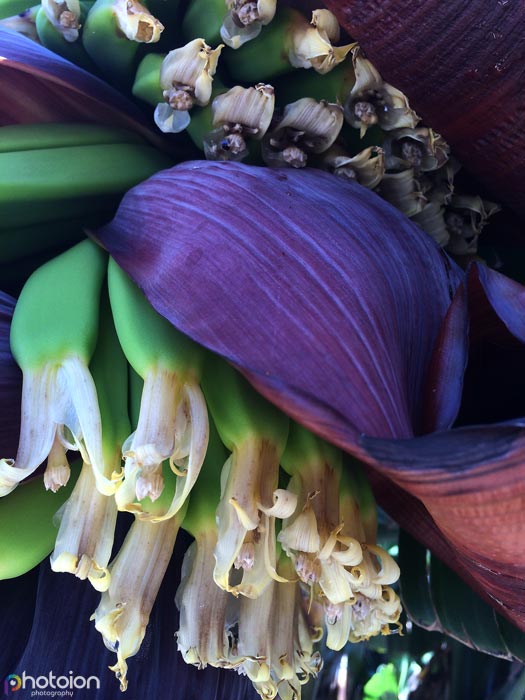
Banana Flower in La Palma, Canary Islands (mobile phone image).
The beaches in La Palma are black sand, not busy, and very quiet. There are signs all over asking for people to be respectful and keep the noise level down. The water is blue and clean, and calm on the west coast. The east coast near the capital is very windy, so not many people choose to go there.
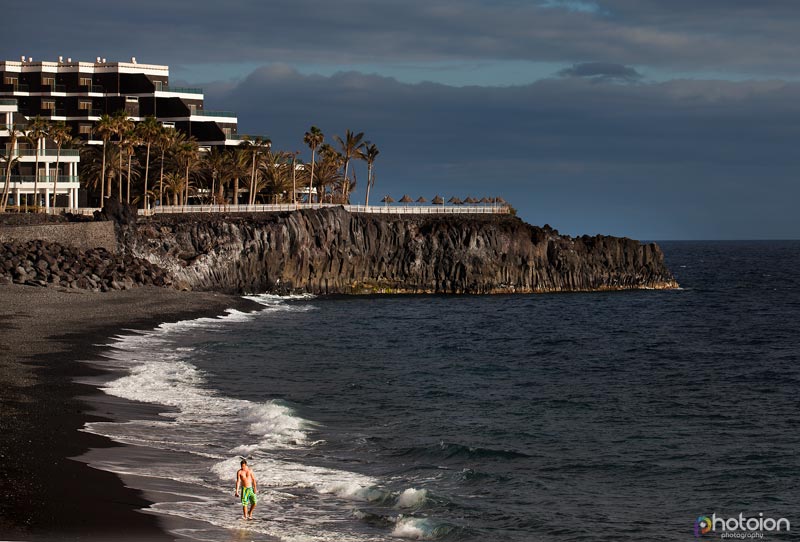
Black Sand beach in Puerto de Naos, La Palma (Canary Islands, Spain)
Despite being such a small island, there is still plenty of art to see. Installations can be found everywhere on the island in various forms, colours, and shapes. Most of these installations are rich in the culture of the island and are really beautiful.
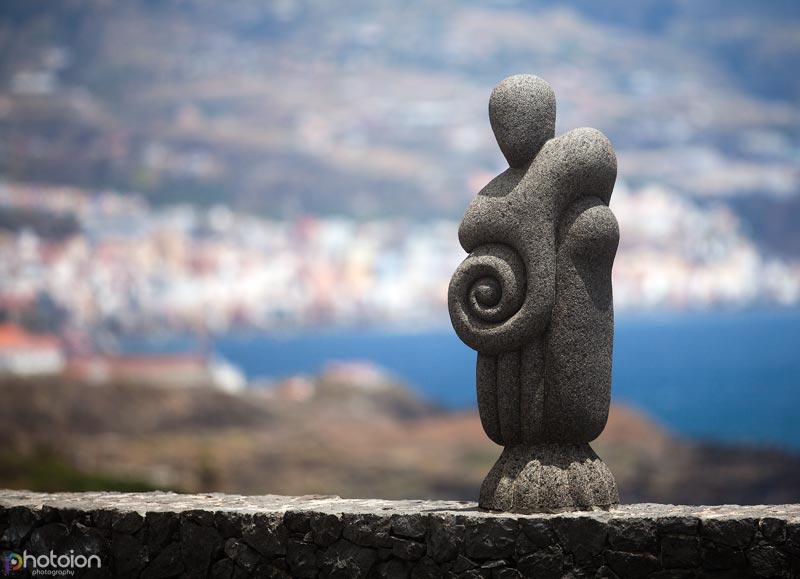
Art in La Palma (Canary Islands, Spain) near Santa Cruz
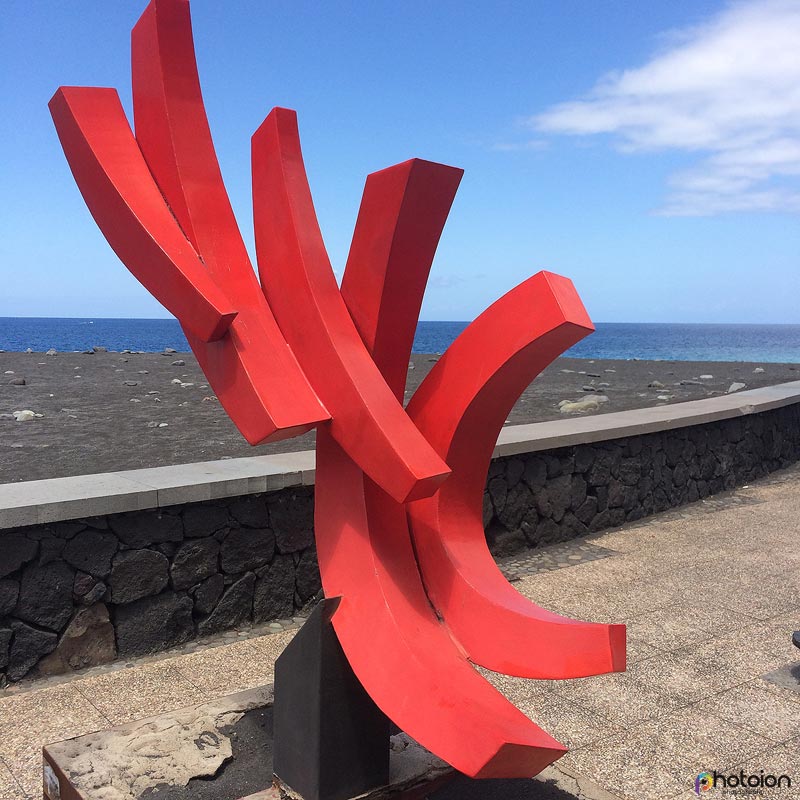
Art in La Palma (Canary Islands, Spain) near El Puerto de Tazacorte (mobile phone image)
From a Photographic point of view, the island is a paradise. Down by the sea, flowers and lizards make a really good subject; you just need time to explore the whole variety of the succulent plants surrounding the place. If it’s sunny, the lizards spend the day lying on the rocks and hunting insects; but when is cloudy you hardly see them. One day, when I went into the kitchen to grab a drink, I spotted an intruder smelling around: a little creature with beautiful velvety skin and short puffy legs. He jumped on me and continued his journey, probably browsing for food.
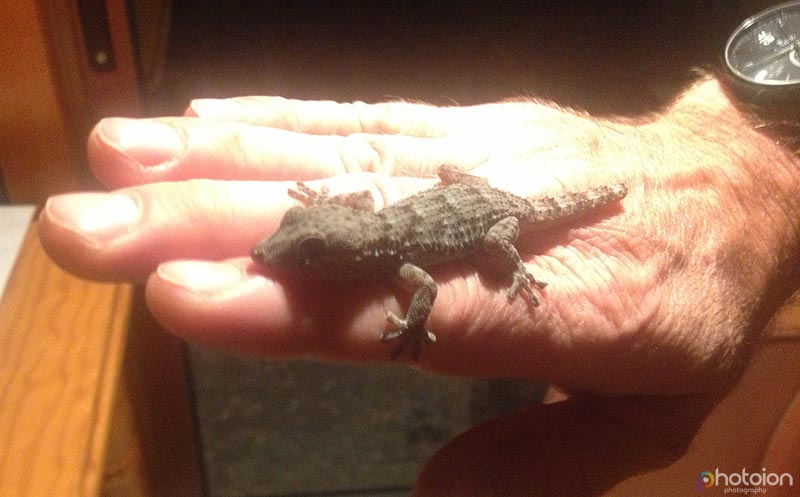
A very friendly Gecko lizard (Tarentola delalandii) in our kitchen (mobile-phone image)
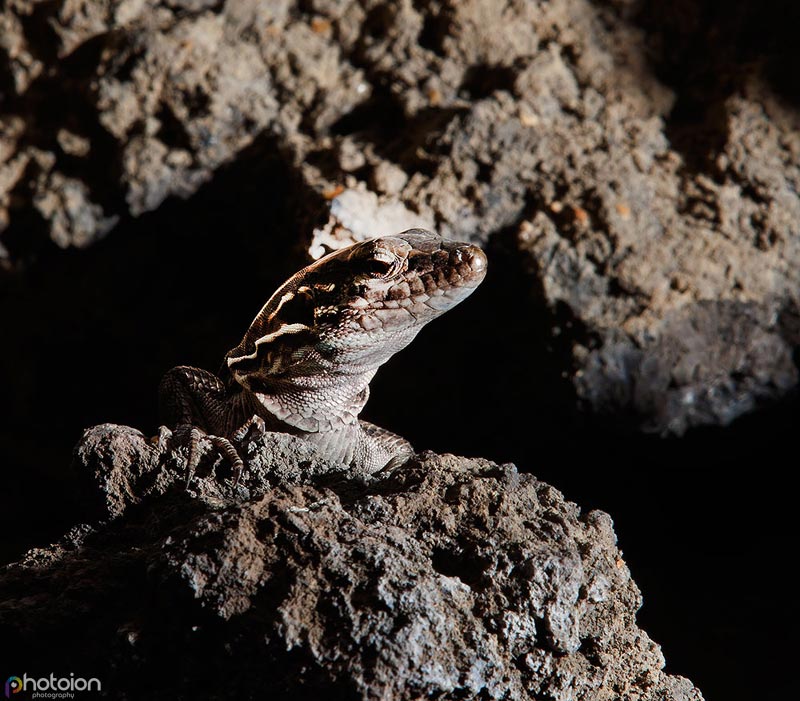
Portrait of a Lizard – image by Ion
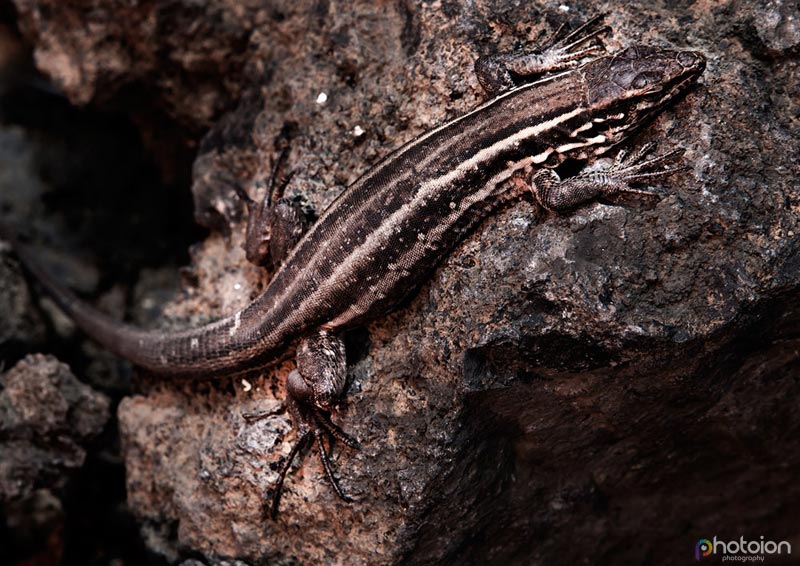
Lizard lying on the rocks – image by Ion
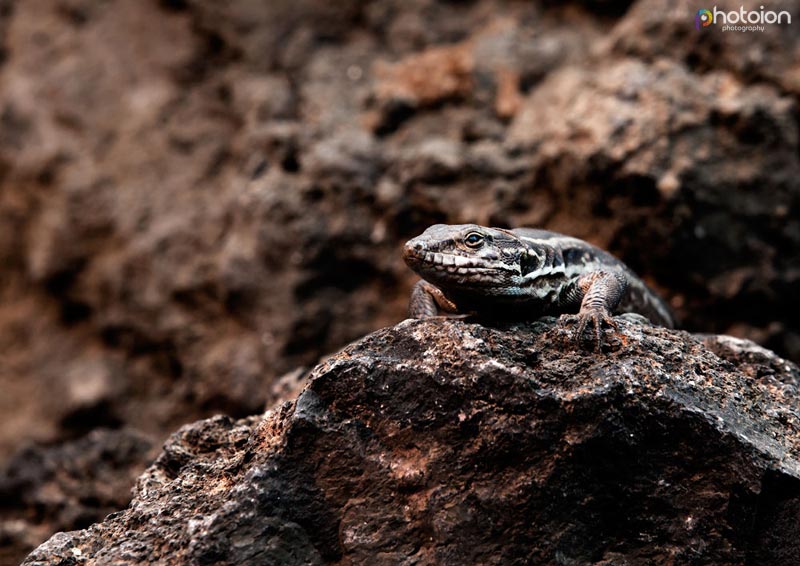
Lizard lying on the rocks from different angle – image by Ion
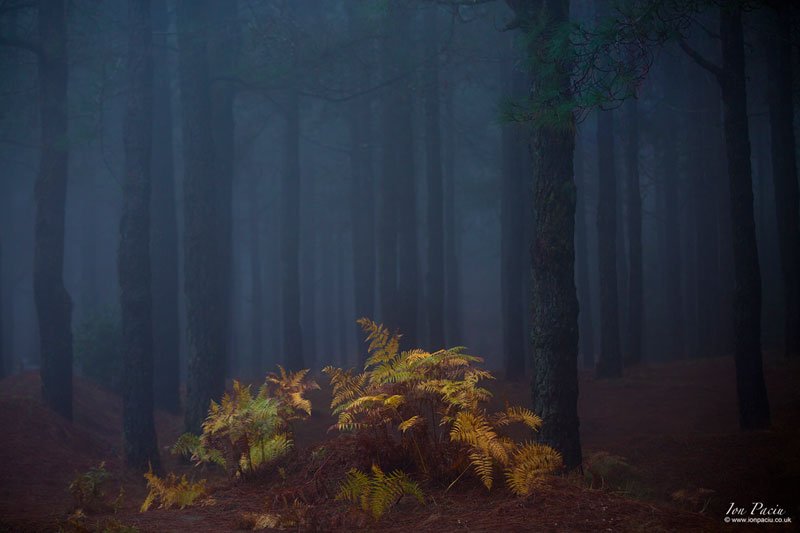
Misty Forest with fern in La Palma, Parque Natural Cumbre Vieja, Canary Islands, Spain
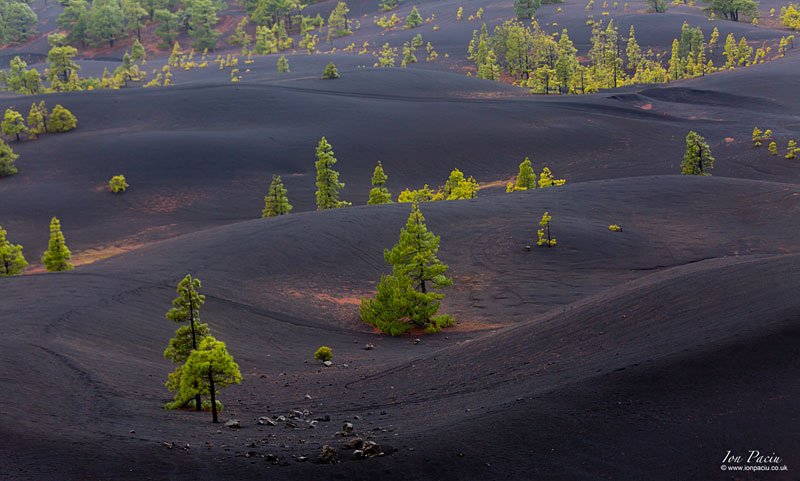
Black Sand Landscape in Park (parque) natural Cumbre Vieja in La Palma, Canary Islands, Spain
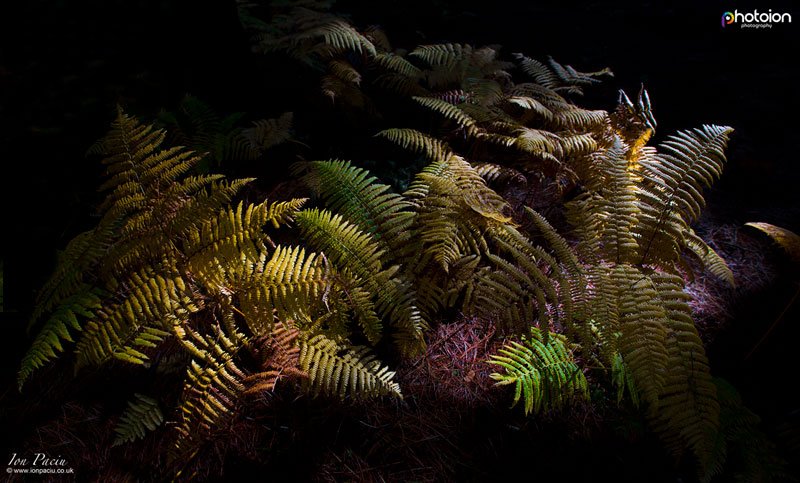
Ferns in Park (parque) natural Cumbre Vieja in La Palma, Canary Islands, Spain – image by Ion
Before long, the time to go up the mountain came around and we started our photographic journey with Caldera de Taburiente National Park (Parque Nacional de la Caldera de Taburiente), which once was believed to be a huge volcano crater.These days, it is just known to be a mountain with a curious curved crater shape. Caldera de Taburiente dominates the northern part of the La Palma Island, it is about 10 km in area and was designated as a national park in 1954. The road to the centre of the Caldera de Taburiente is really beautiful and it is guarded by plenty of beautifully shaped conifers. We drove inside the mountain crater and were amazed by the surrounding natural beauty. The air was so fresh and crisp and there was a zesty smell on the wind. It was a pleasure to be there!
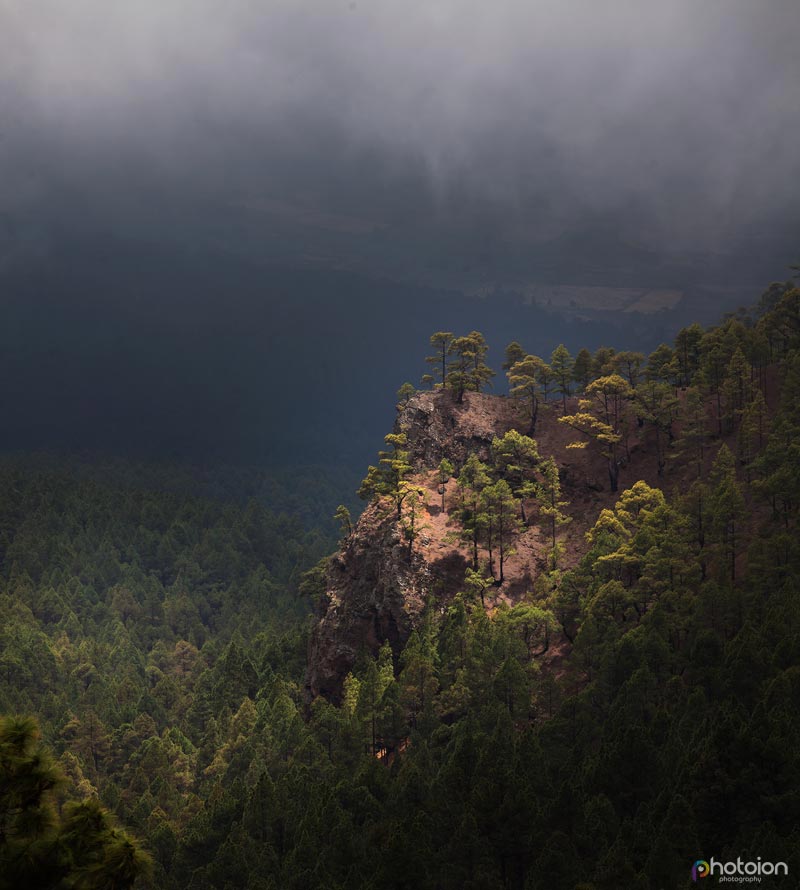
The Road inside the Caldera de Taburiente National Park was spectacular with many beautiful photographic opportunities – image by Ion
Part of this volcano is The Cumbrecita, which is based at a lower point in the south-east of the Caldera’s edge, providing an amazing view into the centre of the Caldera. The Caldera de Taburiente National Park is well looked after by the island’s authorities; the road is closed to driving visitors and can only be accessed by car if you obtain an access and parking permit. The car park inside the Caldera de Taburiente National Park is limited to 16 cars at a time, and you will only be given a permit if there are less than 16 cars in the car park.
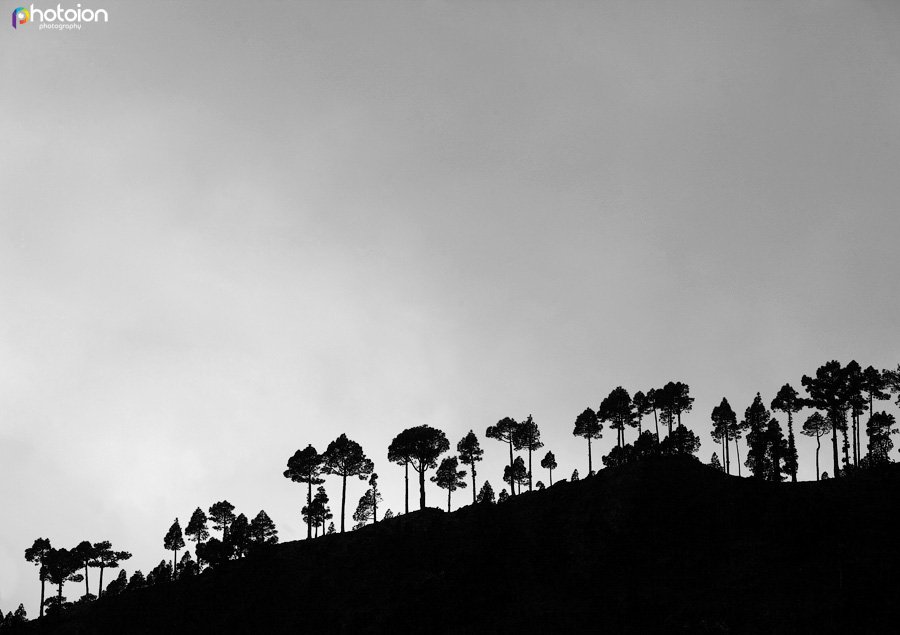
Inside the National Park Caldera de Taburiente, minimalist landscape – image by Tatiana
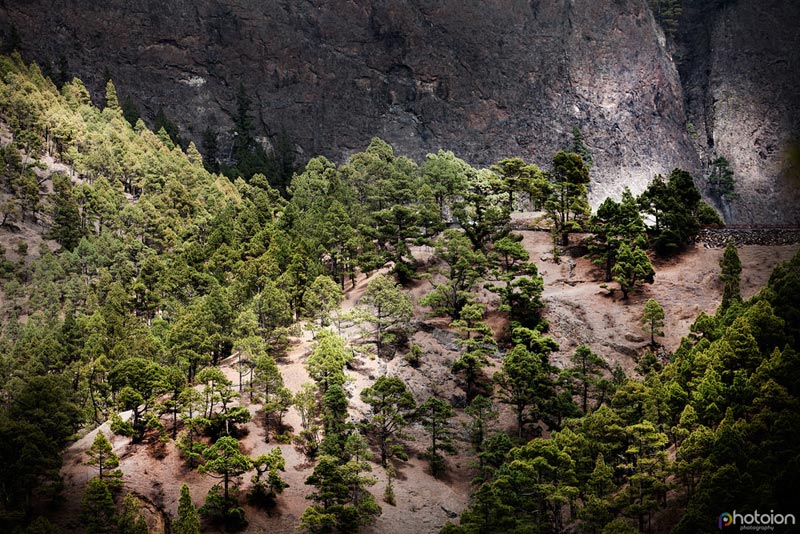
Inside the National Park Caldera de Taburiente – image by Ion
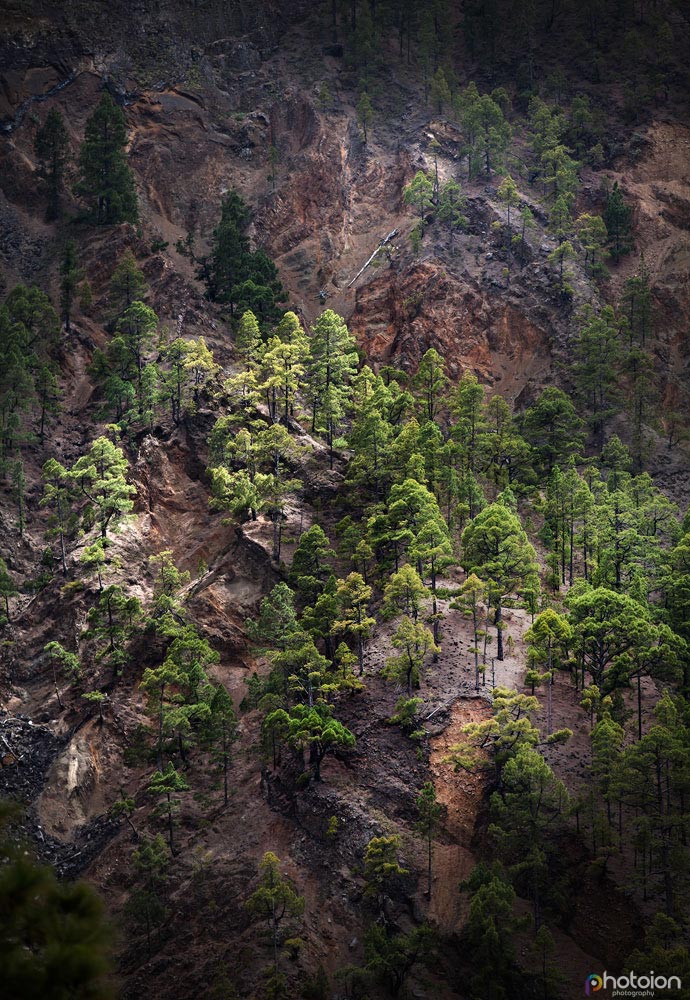
Inside the National Park Caldera de Taburiente – image by Ion
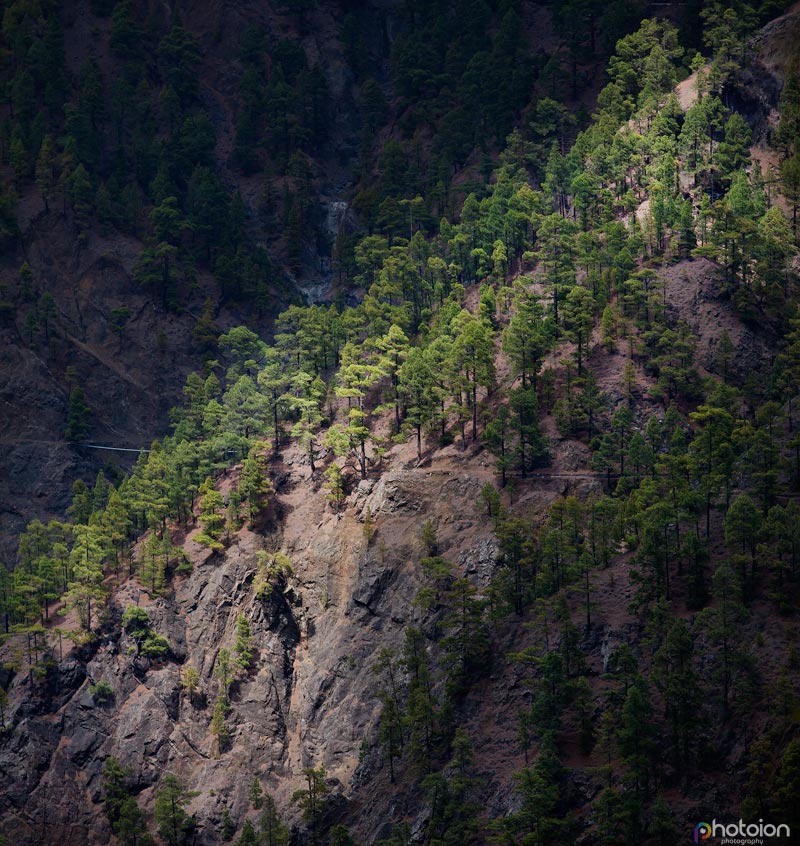
Inside the National Park Caldera de Taburiente – image by Ion
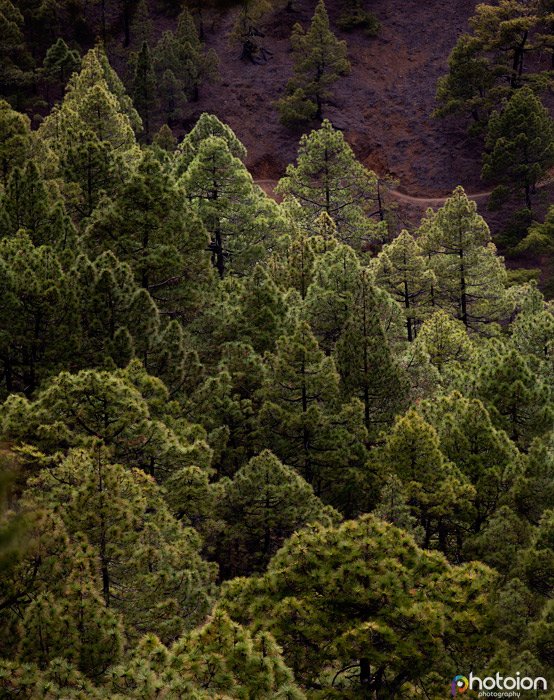
Inside the National Park Caldera de Taburiente – image by Tatiana.
After we finished at the Caldera de Taburiente National Park, we drove towards the top of the mountains. The road offered some amazing bird view panoramas across Los Llanos de Aridane, which is a municipality of the Province of Santa Cruz de Tenerife, Canary Islands, Spain.
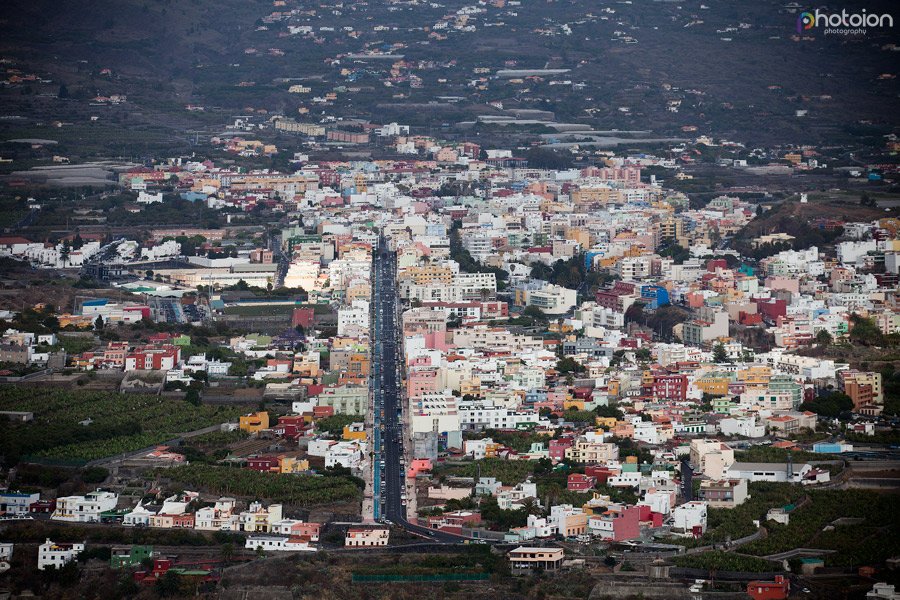
Bird view of Los Llanos de Aridane – image by Ion.
One part of the huge extinct volcano rises about 2,400 metres (nearly 8,000 feet!) above the ocean, providing one of the finest sites in the world for star gazers and astrophotography. Therefore the place is populated with a group of telescopes which is usually called “astronomical observatory” – La Palma Roque de Los Muchachos Observatory, which is part of European Northern Observatory. The location raises 500m above the clouds and is permanently accompanied by a very clear sky. This is the main reason why all telescopes are located here. You can drive to the top of the mountain where the telescopes are located; which is what we did. The road to the top of the mountain was astonishing, and surprisingly good quality; it was better than many roads in European developed cities.
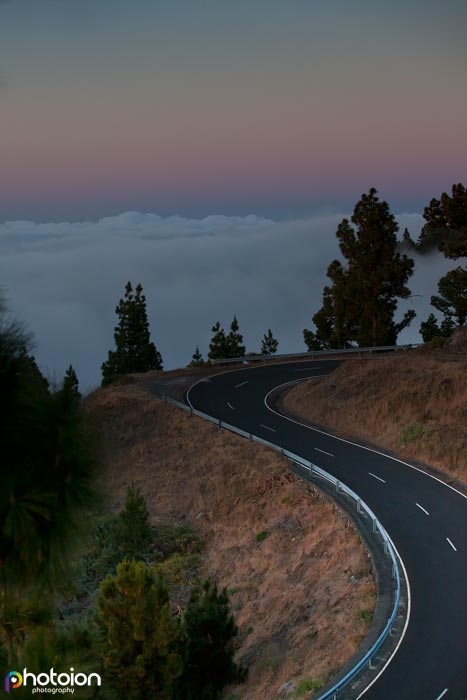
Driving above the clouds – image by Ion.
When we reached the altitude of the clouds everything got misty and we were lucky enough to witness one of the most amazing sunsets we have ever encountered. It was very late afternoon, almost evening, and we chose this time of the day on purpose.
A red glow, soft, warm, dimensional, and just flat-out magical surrounded the whole place. It was a pure “golden hour” which is the perfect time for photography, so we stopped the car and started taking pictures. We didn’t know what to point the camera at first, everything looked so amazing. When we felt like we has snapped almost everything around us, we stopped and enjoyed the serenity of the place, it was so beautiful!
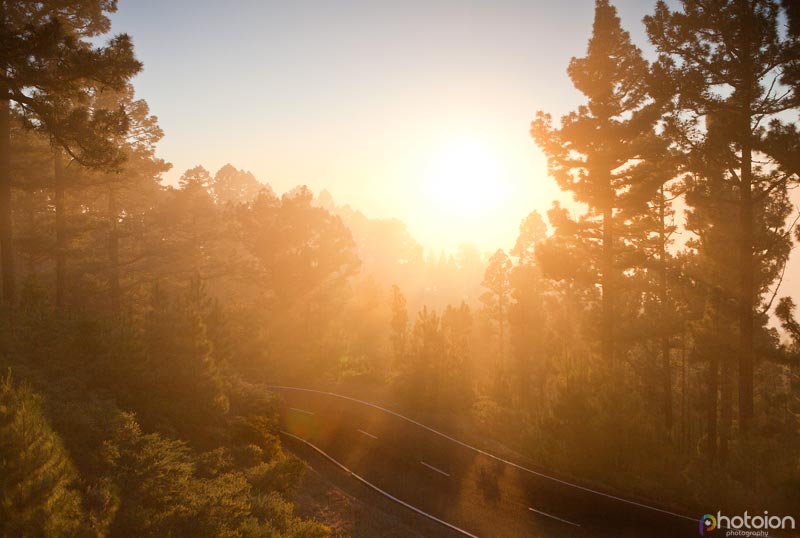
Golden sunset above the clouds – image by Tatiana.
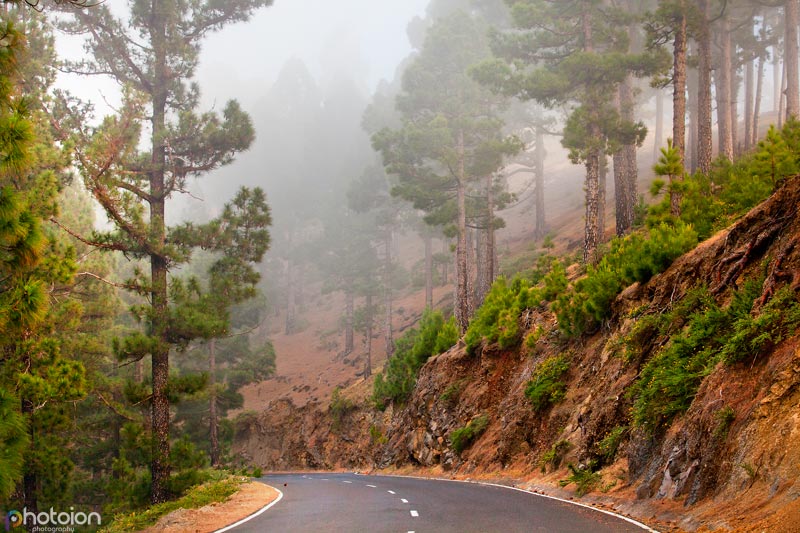
Above the clouds driving towards the observatory – image by Tatiana.
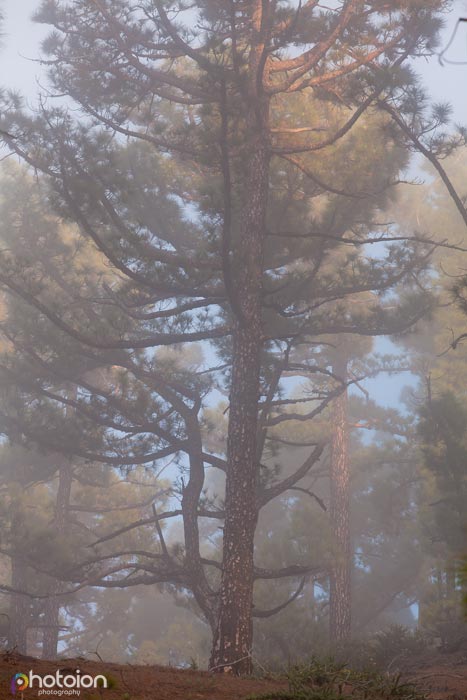
Forest above the clouds – image by Ion.
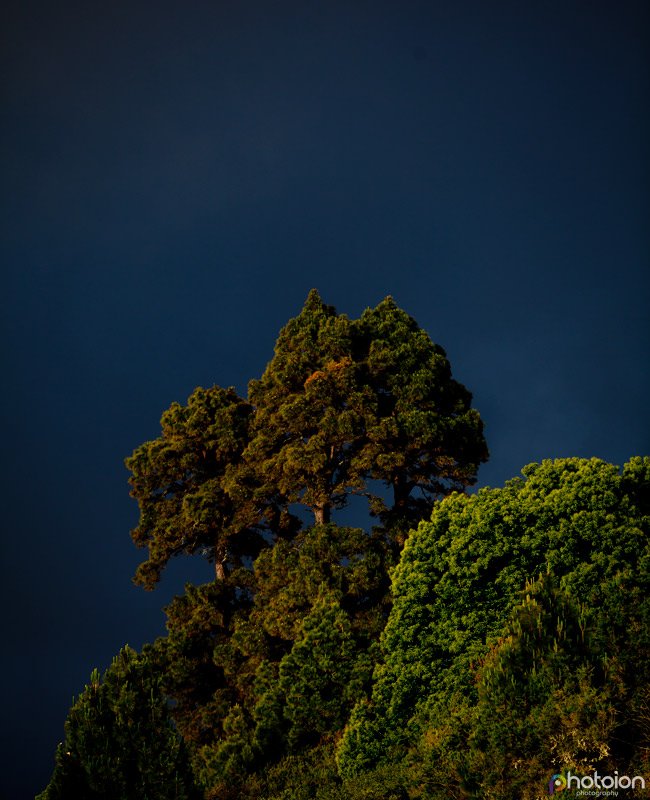
Dark sky against sunset – image by Ion.
With our cameras practically bursting with beautiful “golden hour” captures, we continued our journey to the astronomical observatory.
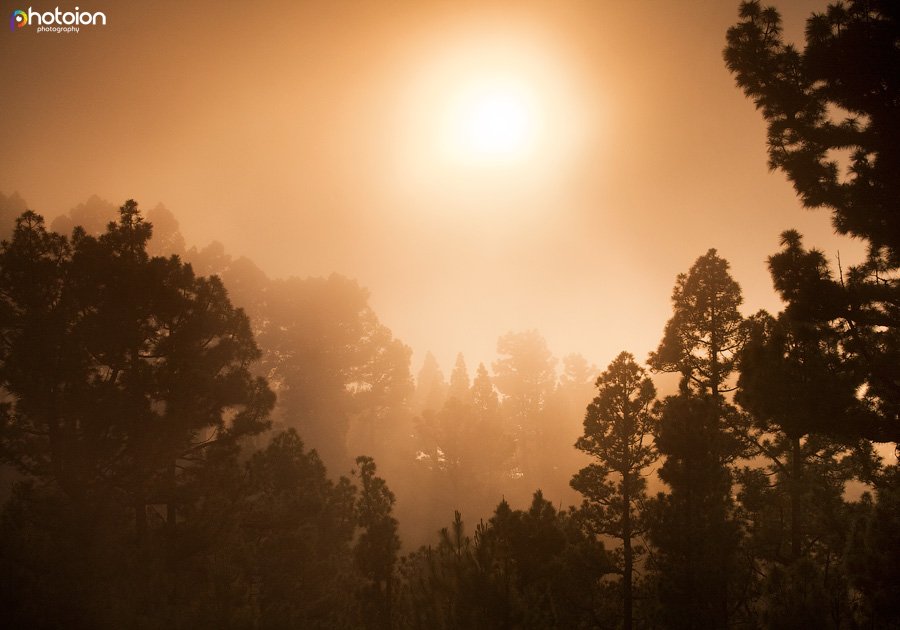
Another golden sunset above the clouds – image by Tatiana.
It was getting dark (and cold the temperature was drooping every 500 meters) and that was exactly what I was looking for: a very dark starry night sky. When we reached La Palma Roque de Los Muchachos Observatory I stopped and captured a few images while there was still a bit of natural light left, for the record.
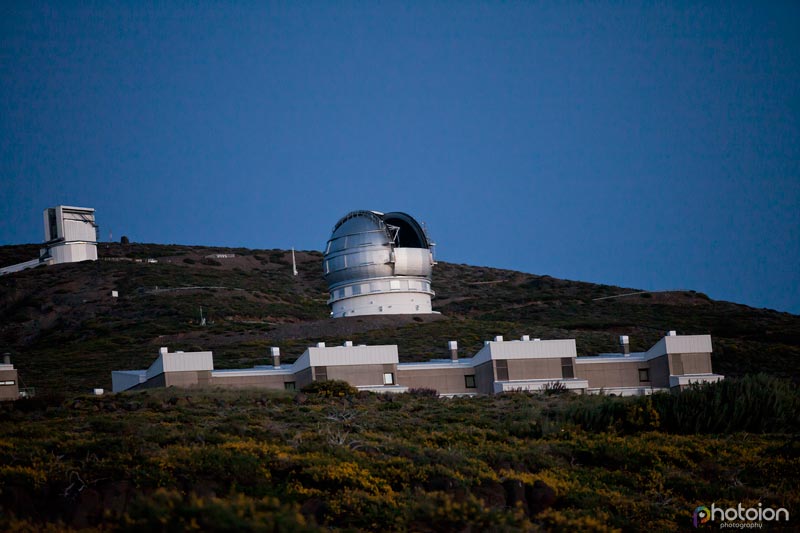
GrandTeCan Telescope part of La Palma Roque de Los Muchachos Observatory – image by Ion.
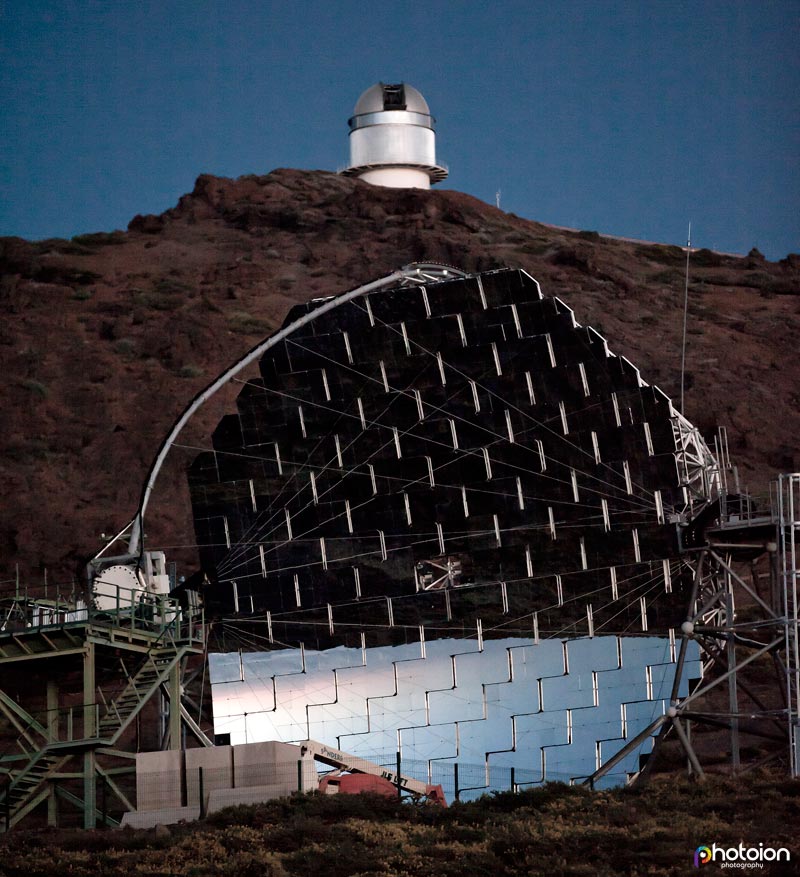
MAGIC Telescope, part of La Palma Roque de Los Muchachos Observatory – image by Ion.
La Palma Roque de Los Muchachos Observatory part of The European Northern Observatory is staffed by representatives from: Spain, Sweden, Denmark, United Kingdom, Germany, Italy, Norway, the Netherlands, Finland, Iceland, and the United States. Apparently there are around 20 astronomical telescopes on La Palma Island which are owned and operated by many different nations. The biggest of these are: GranTeCan Telescope (also known as GranTeCan or GTC), William Herschel Telescope, and the Liverpool Telescope. These telescopes are situated 2267 metres (7,440 feet) above sea level.
Then we drove a little further towards the east side of the mountain where we meet 2 German star gazers who were waiting for the nightfall, they were equipped with a Japanese telescope and a canon DSLR camera, they seemed to be well prepared as you can see in the picture. We stopped and introduced ourselves, and as usual; I took a picture of them, I couldn’t resist :).
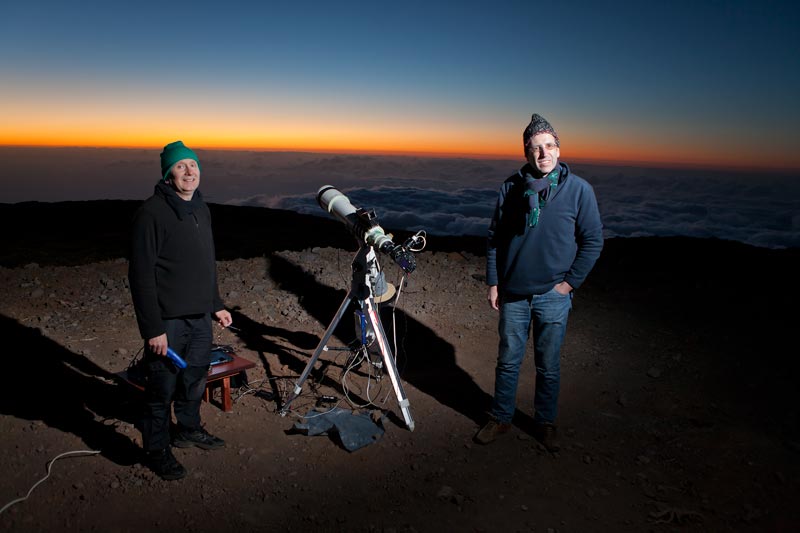
Star Gazers Markus and his friend from Germany.
We spent most of the night on the top of the mountains around La Palma Roque de Los Muchachos Observatory. It was freezing cold about 6 – 7°Celsius but we were well equipped with plenty additional portable power packs, food and drinks, and a full tank of diesel, just in case. The moon was bright in the sky, like a powerful torch, which helped with navigation, I was completely mesmerised by the landscape and we prepared our cameras and spent lots of time watching the surroundings. It was a spectacular view; so unusual to see the clouds from the top, like we were flying above them.
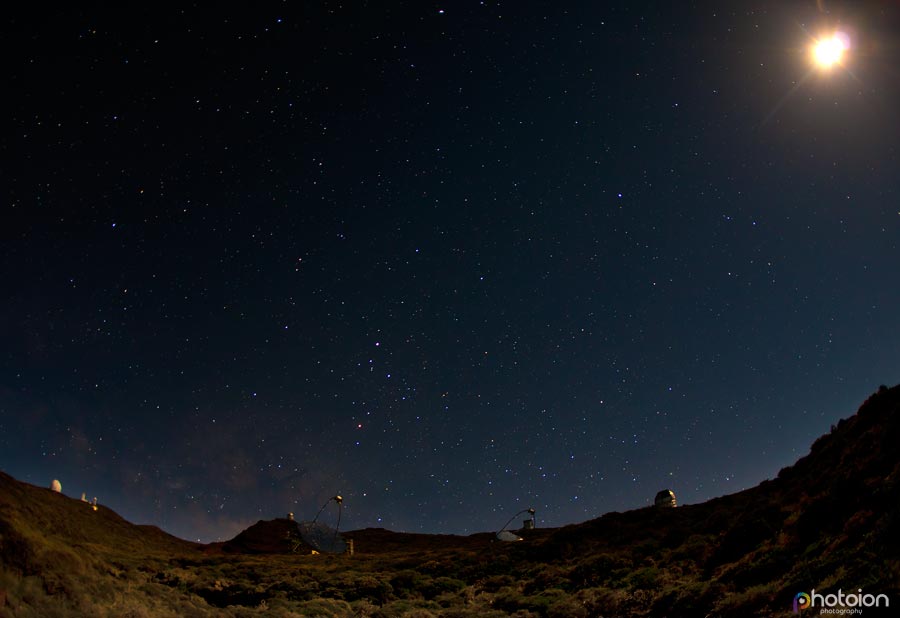
Stars by the observatories – image by Ion
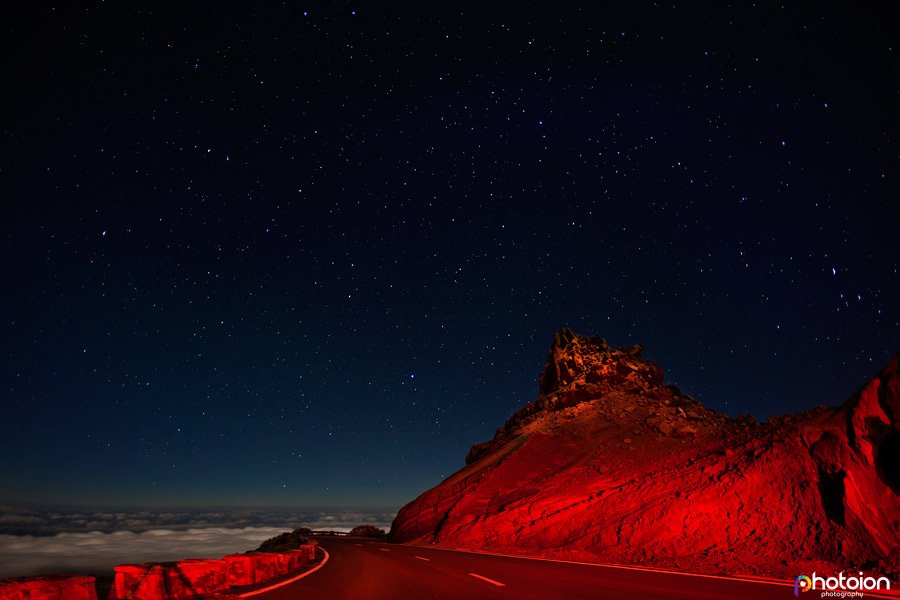
Starry night – image by Ion
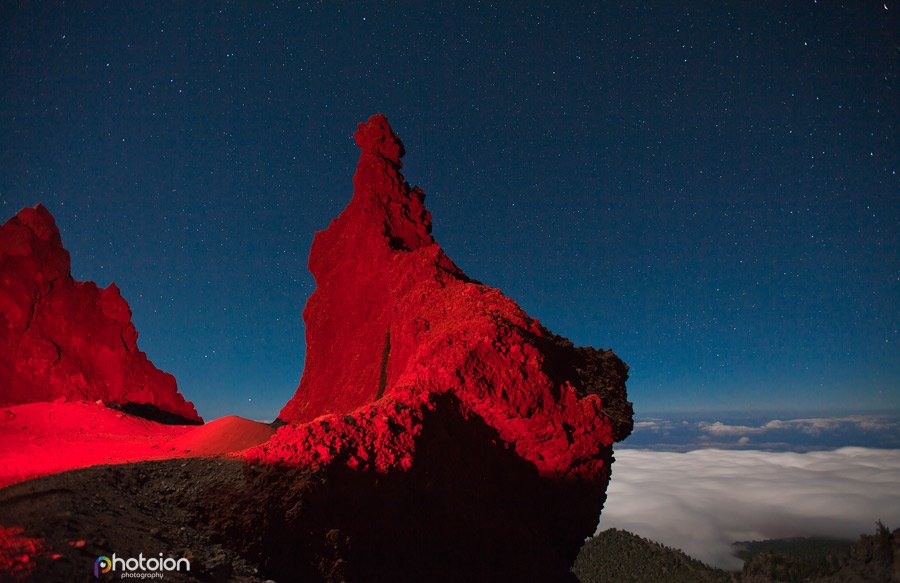
Starry night red rock – image by Ion
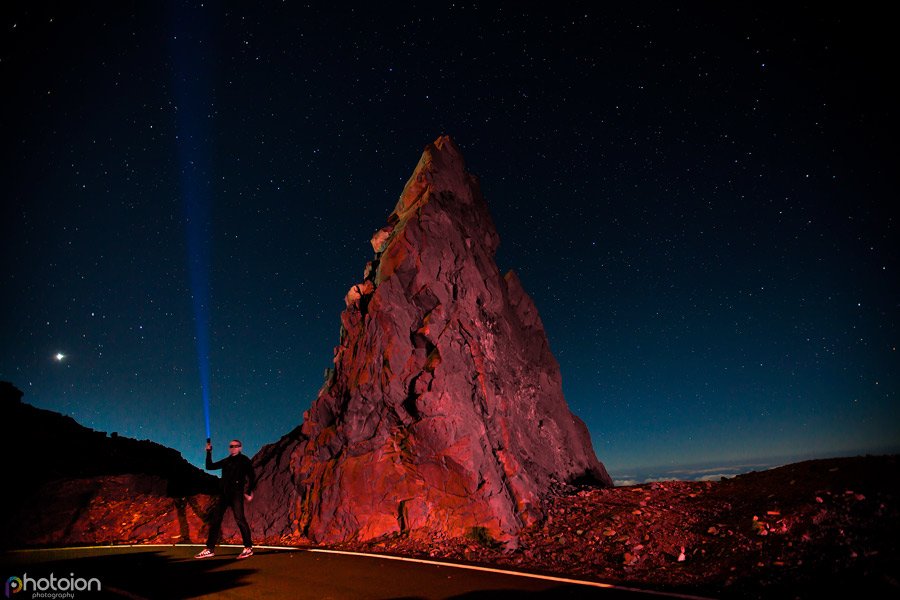
Time for a selfie :) you can see Venus in the background, left side.
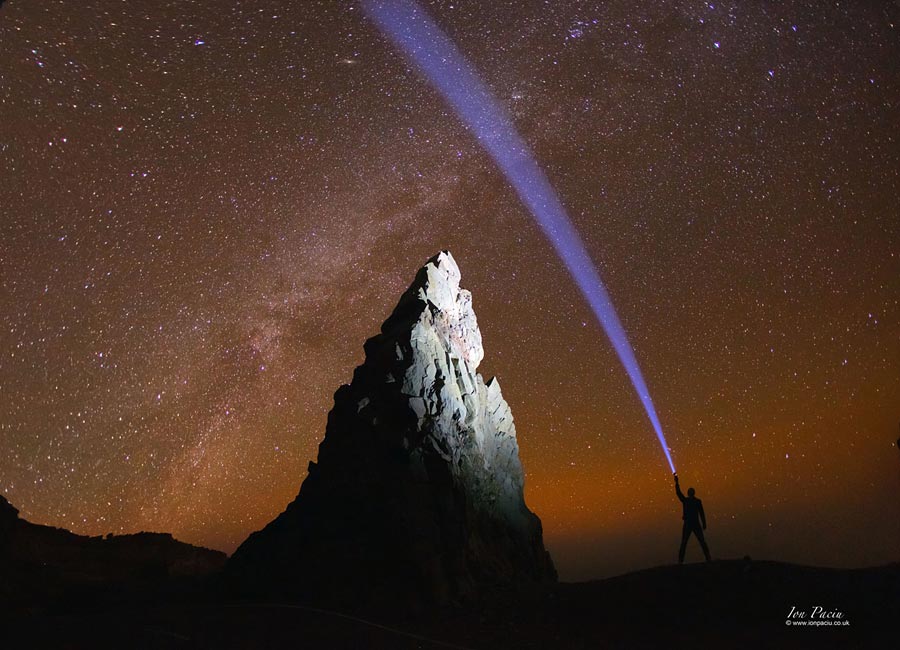
Selfies are very popular now-days :)
It was long past midnight when we decided that we had enough of star gazing and enough images on the memory cards, so we decided to drove back home. On our way back we drove very carefully to prevent the breaks from overheating. ATTENTION! When driving down the hill and the road is very steep, if you drive fast and press the breaks violently you can easily lose your breaks as the heat from the break disks can melt the gaskets of your break cylinders!! This is very dangerous, so please always drive slowly when driving down a mountain, don’t rush; it can cost you your life!
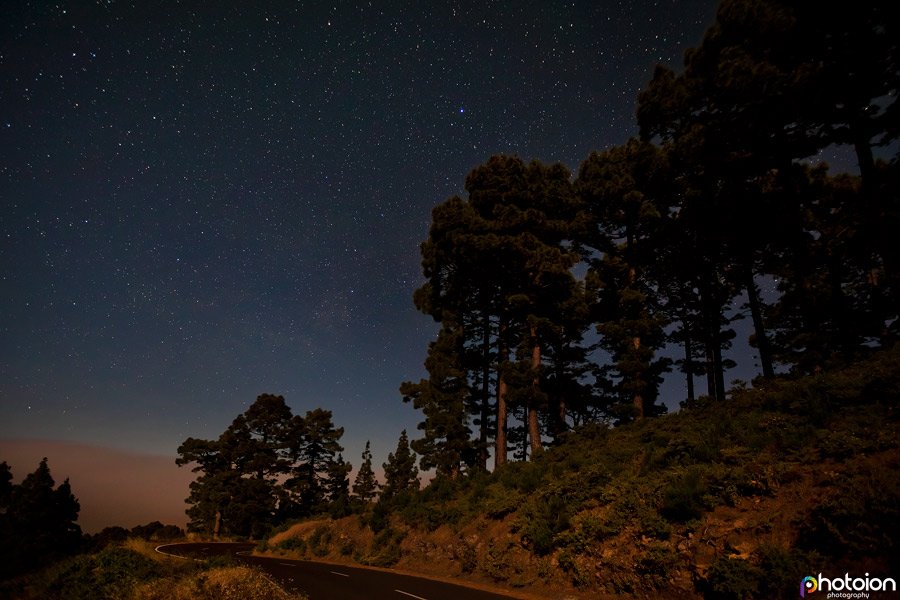
On the way back home – image by Ion
At some point we saw something jumping in front of the car, it was very fast; we got a bit worried but after happened the second time we realised that we were surrounded by wild rabbits, they love the lights during the night and they always jump and run in front of the cars. After a while we descended below the clouds again and the clear, starry night sky became cloudy again.
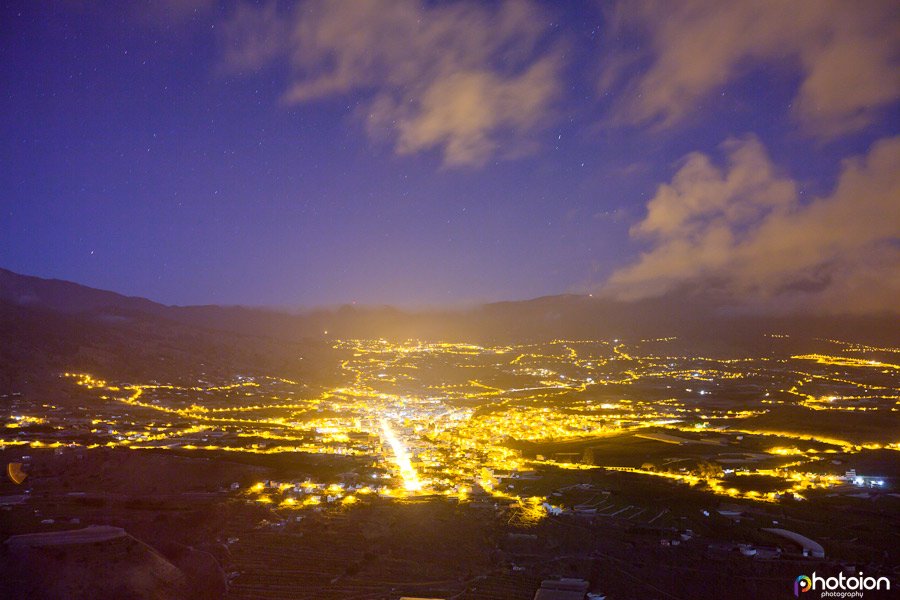
Los Llanos de Aridane, night bird view – image by Ion.
When we got back to the chalet it was almost morning so we left everything on the floor and jumped straight in the middle of the bed; we were exhausted from taking so many wonderful images!
We left La Palma a couple of days later, and maybe for the first time we were sad to be leaving, and we didn’t want to go back home (this usually doesn’t happen, we miss London very quickly); we wished to have had a couple of more days to explore this beautiful island. We will be definitely back to La Palma at some point soon, but before that, our next quest will be the Tenerife island, another beautiful part of the Canary Islands. Obviously we will let you know how it was, but until then take care and happy shooting!

Last capture before taking off, it was time to go back home

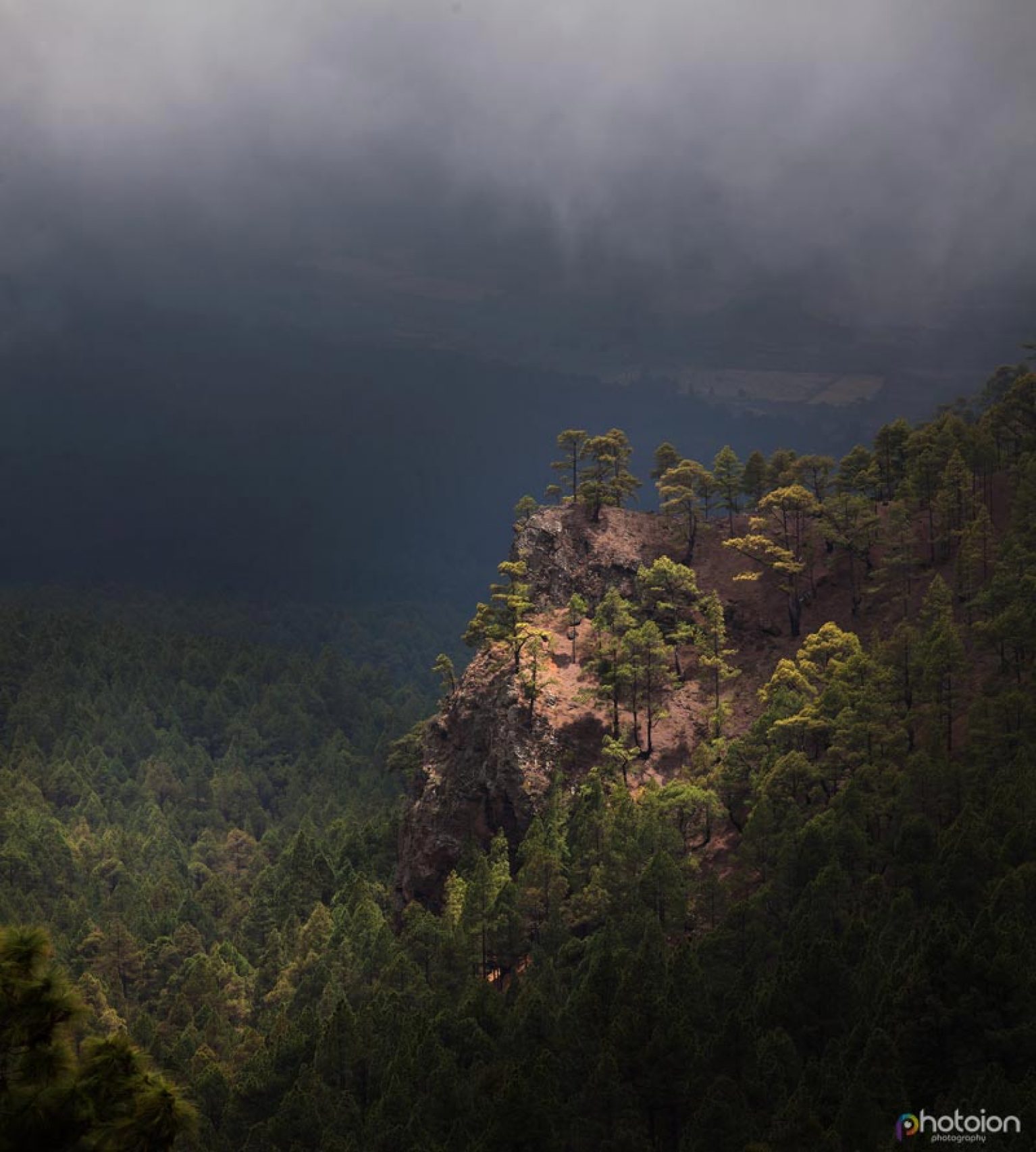
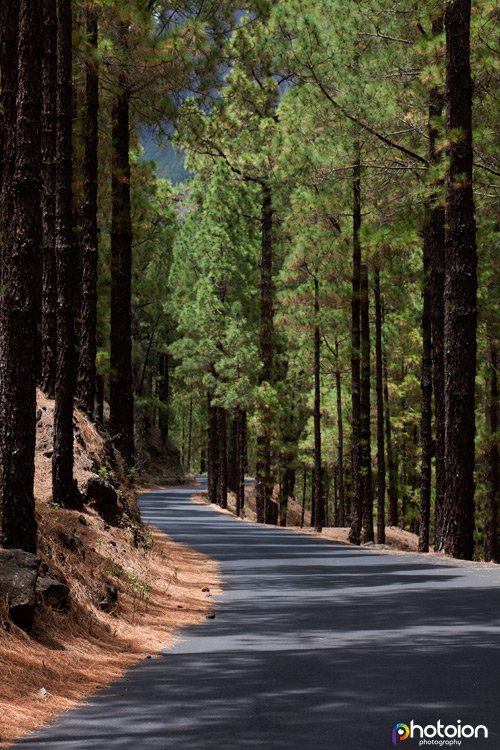
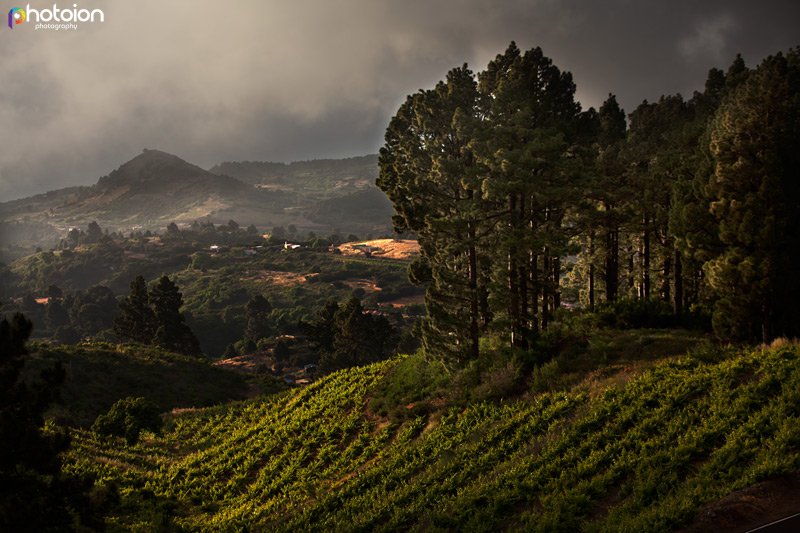
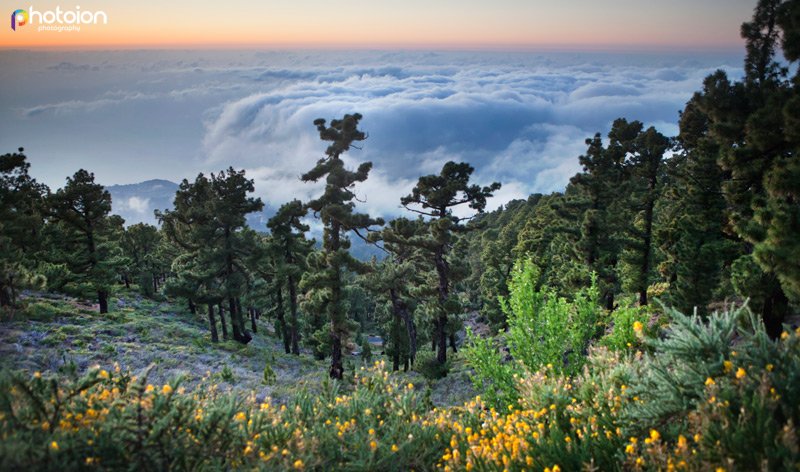
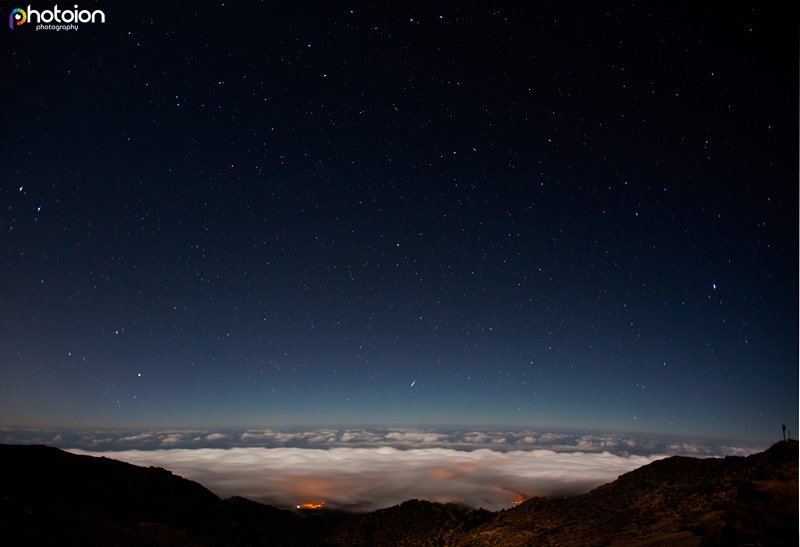


Lovely photos of a lovely island.
Your mystery plant is kitten-tail grass or rabo de gato in Spanish. The locals consider it a weed and it’s very invasive, but I think it’s beautiful, especially back-lit.
Thank you very much Sheila, it is indeed a very beautiful plant.
Wow Tenerife really does look amazing. Thanks fir the warning about the drive. Did you rent-a- car there? Is it recommended that you rent a better vehicle? Not just the cheapest version or it does not matter and you have to be super careful no matter what?
It is not Tenerife, it is La Palma.
DonWow. This blog gives me an incredible opportunity to captivate the beauty of the Canaries. I like the photos very much. Its very stunning. I will save it definitely. Thanks for this.
Thanks for this
One of the most significant keys to the success of Tenerife is the glorious Adeje. At its coast are many of the archipelago’s most spectacular beaches. Away from the shore, it also has a catalog of compelling landscape. Sprinkled with local hospitality and enhanced with word-class amenities and facilities, it is, by itself, a tourism powerhouse. Many first time vacationers on Adeje often find themselves astounded. They expect mind-blowing beaches, but few anticipate an equally pleasing inland. It’s a known fact that a wealth of commercial establishments lay here. No one supposed they will find treasures. When traveling to this beautiful municipality, assume nothing and just relish the experience.